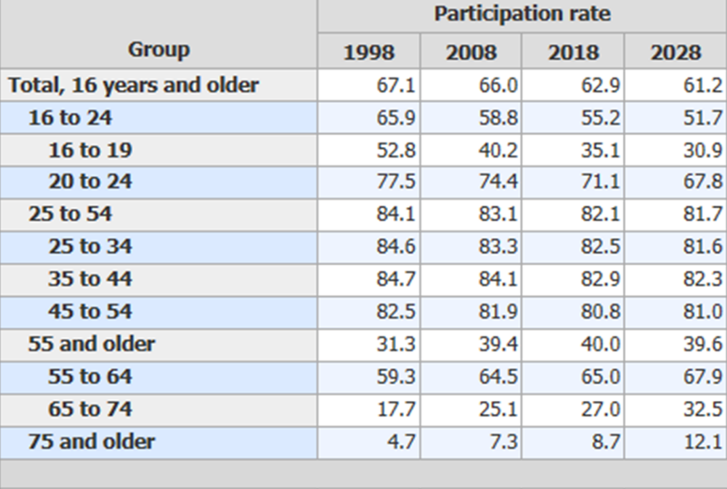Recruiting in today’s labor market can be tough. To be successful, your business must be organized, consistent and process driven. The number of eligible candidates and methods of communication have changed, so we’ve created a quick list of options you can implement at your organization to start improving your recruitment initiatives this year.
The Struggle is Real
If you are struggling to find skilled, dependable, high-performing employees, you aren’t alone. It seems almost every week there is another article in the news about how tight the labor market is. With so many opportunities for job seekers, recruiting and hiring pose an unprecedented set of challenges for employers.
How tight is the labor market, really? The U.S. Bureau of Labor Statistics reported a nationwide unemployment rate of 3.5% in December of 2019. The current unemployment rate marks the 19th consecutive month at or below 4% employment. The lowest rate since May, 1969.
We tend to believe the unemployment rate is cyclical, and when the economy experiences a recession, there will be plenty of available candidates in the job market. Unfortunately, economic research tells a different and less hopeful story.
Aside from the relative success of the economy, demographic constraints pose the greatest threat to unemployment and won’t easily reverse. Proportionally, more of the working-age population is over 60 and has thus retired—or will soon. Additionally, shown in the chart below, young adults are staying in school longer and joining the workforce at a slower rate.

Now that we’ve complained enough about the labor market, let’s discuss how your business can experience success finding and hiring quality candidates. So, what can we do to recruit in a tight labor market?
5 Tips to Improve Your Hiring Process
1. Speed it up! Streamline the Application Process
Have you considered what the hiring process feels like from the candidate’s point of view? How many interviews will the candidate have to go through? What is your communication like? How long does it take you to make a decision? Do you communicate your decision quickly or do you leave candidates hanging for weeks after the interview? Streamline your process, use technology effectively, and be considerate of the candidates’ time if you want your top picks to accept your offer. Candidates may be interviewing elsewhere in addition to your company, so delivering a timely offer before someone else does is critical.
2. Define and Implement an Employee Referral Program
Employee referrals provide better than average candidates because employees know your company culture and understand the type of employee personalities and traits that will work successfully in your organization. Having a “pay-per-hire” program for referrals can be effective, but isn’t the only answer. At Palmer-Donavin, our HR team removed our cash incentive for referrals and saw the number of employees hired by referral increase. Instead, we increased our presence on social media and actively went to each facility to speak to employees about possible referrals. We also built it into our process to ask if they know anyone who might be a good fit here during their 30-60-90 stay interviews.
One effective way to increase referrals is to provide current employees with training on ways to build their online and offline social networks, then ultimately use them to recruit candidates. One way to do this is by providing a LinkedIn media kit to help your employees improve their professional profiles and online presence.
Additionally, be sure you provide an excellent candidate experience to all referrals regardless of their competitive odds at landing the job. Ghosting an employee’s friend or family member is a morale killer.
3. Going Mobile. Using Text Campaigns to Keep Candidates Engaged
Many of today’s job seekers, especially those entering the job market, are constantly on their phones. This trend opens a new opportunity for candidate communication — text messaging. In fact, recent data found 90% of job seekers believe it would be helpful to receive text messages during the application and hiring process.
At Palmer-Donavin, we use a recruitment texting software called TextRecruit, which helps us manage communication with candidates by sending out automatic text reminders and updates regarding their status.
If you don’t feel your company has the time or resources to invest in texting software, start by using your personal cell phone to text. If you’re concerned with candidates having your number, I have personally never had an issue with candidates contacting me outside of normal business hours.
4. Automate Your Processes

More than ever, time is a precious commodity, and organizations are reluctant to carry out time-consuming multiple rounds of interviews with employees.
VidCruiter is a tool we recently implemented which allows candidates to decide when and how they interview. We found it is an excellent alternative when you are struggling to find time to meet with a candidate. Since the candidates’ responses are recorded, you are also able to determine at a higher level of certainty if they will be a good fit before bringing them on-site.
5. Maintain Relationships with Previous Employees (The Good Ones!)
As we call them, “boomerang employees” are a great opportunity to hire already experienced employees who will immediately contribute. Not only will hiring boomerang employees save you from starting the recruitment process from scratch, but these employees will likely be a good fit with your company culture, possess the technical skillset needed, and will be familiar with how your team works; therefore, less training will be required.
For example, if an employee left your company because he or she didn’t see advancement opportunities, but your team has since grown, and you’ve defined a career path you know they would be interested in, this offers the perfect opportunity for you to reconnect about your open roles. Think Amazon. Perhaps your previous employee left for a couple dollar raise, only to find out they are suffering in the new work environment.
Success in this labor market depends on your ability to hire right the first time and in a reasonable amount of time. It’s still possible to find high performing employees and maintain low turnover numbers, so we recommend trying one or all of these tips to streamline your recruiting process. When you start applying a systematic approach to your hiring process, you’ll eliminate unnecessary processes, reduce work, and drive engagement in your organization.
Content Author: Tom Rodgers is a Corporate Recruiter for Palmer-Donavin and has been professionally recruiting in this market for 3 years. He has been instrumental in streamlining the recruiting process and implementing technology to drive efficiencies. Connect with Tom on LinkedIn or email him at tom.rodgers@palmerdonavin.com.

